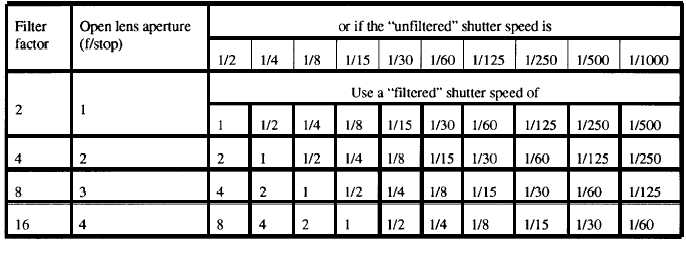Table 3-6.–Filter Factor Equivalent Exposure Table
Example: The unfiltered exposure calls for l/60 second,
and the filter factor is 3. The correct exposure is 1/20
second (1/60 x 3 = 1/20 second). However, most
cameras do not have a 1/20 second shutter speed;
therefore, use 1/15 second or the next slowest shutter
speed.
3. When you are using an SLR camera with
through the lens (TTL) metering, put the filter on the
camera lens and adjust the exposure in the normal
manner. However, certain dark blue, red, and orange
filters may give faulty readings if used with TTL
metering systems because the meter reads 18 percent
gray. The camera light meter may not be sensitive to the
color of light passed by the filter.
4. Consult a filter factor equivalent exposure table.
(See table 3-6.)
DARKROOM FILTERS
No types of filters are used almost exclusively in
the photographic darkroom. They are safelight filters
and printing filters. The printing filters include variable
contrast filters for printing black-and-white materials
and color printing filters for printing color materials.
SAFELIGHT FILTERS
The word safelight in photography is used to
describe filtered tungsten illumination or direct
illumination from a sodium-vapor lamp. The color of a
sodium-vapor lamp does not affect (expose)
light-sensitive materials under prescribed darkroom
conditions. The word safe is misleading since light-
sensitive materials are never completely safe from
safelight illumination. The use of a safelight with some
types of light- sensitive materials is not recommended
Compatible safelight filters for use with certain
light-sensitive materials should be selected on the basis
of color sensitivity and emulsion speed of the material.
The best method of selecting a darkroom safelight filter
is to use the filter recommended by the manufacturer of
the light-sensitive material. Safelight filters absorb that
portion of the visible spectrum produced by a tungsten
lamp that would affect the light-sensitive material being
handled.
Sodium-vapor lamp safelights use sodium gas to
provide safelight illumination. Incandescent sodium gas
produces a very narrow band of visible light in the
yellow-orange portion of the spectrum. Colorblind
printing papers are not sensitive to this monochromatic
(one color) band of light, whereas the human eye is very
sensitive to it. Therefore, a brighter print room is
possible without the light affecting the printing paper.
By using specially designed filters that further reduce
the narrow band of sodium-vapor light, black-and-white
materials sensitive to green and red light can be handled
under this illumination. Table 3-7 provides some
examples for the application of safelight filters. Always
consult the Photo-Lab-Index to determine the best
safelight for use with various light-sensitive materials.
VARIABLE CONTRAST PAPER
PRINTING FILTERS
To obtain various degrees of contrast using variable
contrast printing papers, use a series of magenta and
yellow filters. The magenta filters are used to print
black-and-white negatives that are low in contrast.
3-10



